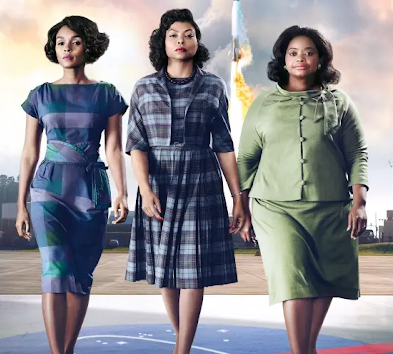By Monica Morales Hernandez and Sherli Koshy-Chenthittayil
Pop culture plays a significant role in shaping societal perceptions of who belongs in mathematics and other STEM fields. Media representations, whether in movies, television, literature, or social media, can either reinforce or challenge stereotypes about mathematicians and scientists. Historically, English-language pop culture has often depicted mathematicians as white, male geniuses, reinforcing the myth that brilliance in mathematics is innate and exclusive to a select few. This narrow portrayal contributes to a lack of representation for women, people of color, and other marginalized groups in STEM.
As professors, how can we address this issue? The first step is to acknowledge the so-called "genius complex" and make students aware of it. We must challenge the misconception that mathematical ability is a rare, innate gift rather than a discipline that flourishes through curiosity, exploration, and intellectual persistence. Fostering an inquisitive nature, where students are encouraged to ask questions, follow their wonder, and embrace the unknown, can transform the way they see themselves as learners and as mathematicians.
Too often, students believe that being good at math is something you either are or aren’t, rather than a skill honed by inquiry and engagement. This belief can discourage those who struggle early on or who come from backgrounds where they haven’t had strong math support. It also often fosters math anxiety, making students hesitant to engage with the subject. By encouraging students to cultivate curiosity and approach mathematics as a space for questioning rather than a test of intelligence, we open the door to more inclusive and meaningful engagement.
Here are some key strategies that can be implemented in the classroom or in research mentoring groups:
- Include a short statement in the syllabus addressing the “genius complex.” This can help reframe mathematics as a field accessible through questioning and exploration rather than reserved for the innately talented. Such a statement not only benefits students, particularly those grappling with self-doubt or imposter syndrome, but also encourages faculty to reflect on their own messaging. Affirming that mathematics is a space for the curious, the persistent, and the collaborative sets the tone for a classroom where students feel invited to participate and explore. Pop culture has long perpetuated the idea that mathematical brilliance is the domain of isolated geniuses, as seen in Good Will Hunting or A Beautiful Mind, where protagonists are portrayed as exceptional minds with little need for guidance, community, or process.
- Use and acknowledge pop culture as a gateway to inquiry. Present clips or discuss portrayals of mathematicians in films and series such as Hidden Figures (a counter-stereotypical example), Good Will Hunting, A Beautiful Mind, and The Imitation Game. Analyze their impact on public perception of mathematicians and mathematical talent. Activities like displaying a collage of math-related media posters and asking “What do these mathematicians have in common?” invite students to reflect on representation, stereotypes, and cultural narratives. These conversations ground abstract ideas of identity and belonging in tangible, familiar contexts, aligning with the core practices of inquiry-based learning.
- Incorporate biographies of mathematicians from underrepresented backgrounds. Projects such as EvenQuads and Testimonios: Stories of Latinx and Hispanic Mathematicians offer valuable resources. When students research mathematicians from their own cultural backgrounds, they engage in a meaningful act of academic inquiry that connects personal identity with mathematical history. These activities not only challenge stereotypes but also encourage students to see themselves as part of the mathematical community.
- Foster collaborative and exploratory problem-solving. Use group discussions and team-based problem sets to emphasize that mathematics is not a solitary endeavor. Like literature, history, or philosophy, mathematics is enriched by dialogue, debate, and collaborative sense-making. Encouraging students to approach problems together helps demystify the process and supports inquiry-based learning, where the journey toward a solution is as important as the answer itself.
- Encourage peer mentoring and shared discovery. Building a classroom culture where students support one another allows them to learn not only the content but also how to approach challenges with curiosity and confidence. Assigning problems that require multiple perspectives and cooperative effort ensures that all students contribute actively and are positioned as valuable thinkers in the mathematical process. Pop culture often portrays mathematicians as lone geniuses solving problems in isolation; think of Catherine in Proof working through her father’s notebooks alone; Alan in The Imitation Game building his machine in secret; or of Charlie in Numb3rs, solving crimes with equations scribbled across chalkboards late at night. These narratives, though compelling, obscure the reality that mathematical progress is often the result of discussion, revision, and teamwork. In contrast, Hidden Figures provides a powerful counter-narrative by showcasing a collaborative community of Black women mathematicians whose teamwork was vital to NASA’s success.
The impact of pop culture on mathematics and STEM representation is profound. When students are constantly exposed to the trope of the isolated genius, they may struggle to see themselves as capable mathematicians. However, when educators use pop culture to prompt inquiry, inviting students to question, connect, and critique, they create a space where belonging becomes possible. Mathematics, in this environment, becomes a field of wonder rather than exclusion. By centering students’ inquisitive nature and connecting mathematics to the things that already excite them, such as media, identity, and storytelling, we help redefine who gets to be seen as a mathematician.

Monica Morales Hernandez is an applied mathematician and Assistant Teaching Professor at Adelphi University. Her areas of interest are Numerical Analysis, Statistics, Math Education, and History of Mathematics.

Sherli Koshy-Chenthittayil's background as a mathematical educator and researcher for the past decade has given her a unique perspective into the STEMM student experience as well as the data driving this experience. She currently works as the Data Analyst at Touro University Nevada, where she advises faculty and students on a diversity of biomedical, institutional, and educational projects.
